Top 10 KPIs That Every HR Manager Should Track in 2024

Mathew Maniyamkott
Last Updated: 11 June 2024
19 min read

Managing people can be a bit like untangling a puzzle, but fear not! People management doesn’t have to be complicated. It’s all about understanding your employees, and that’s where HR KPIs (human resource KPIs) come in. They act as your secret weapon to decode employee data, gain valuable insights, and unleash the true potential of your team.
As organizations strive to retain top talent, the question arises: How do you showcase yourself as an irresistible workplace? It’s not just about offering attractive compensation; it’s about creating a vibrant experience for employees throughout their journey.
By creating HR KPIs, HR managers can demonstrate the company’s strengths, positive culture, and unique opportunities.
To learn about HR KPIs, we need to know:
- First: What does a KPI mean in HR? And, how do you track its progress?
- Next: How to set KPIs for HR
- Finally: The top 10 HR KPIs for your organization
Click to jump to the section that interests you.
What does KPI mean in HR?
Businesses today understand that the way they treat their employees directly impacts their growth. That’s why taking stock of where you stand by measuring your progress is vital. To truly gauge your performance as an employer, you need to uncover what activities your employees love and identify policies they dislike.
That’s when you’ll gain insights into how well you’re doing. To measure your success, you must keep a close eye on performance indicators, just like a hawk.
These indicators, known as HR KPIs, provide a direct link to your organizational strategy.
HR key performance indicators can help you:
- Assess the effectiveness of your HR policies.
- Define or refine them based on the expected HR outcomes and business goals.
- Optimize your recruiting process
- Enhance employee programs
- Address workplace issues.
- Nurture employee relationships, etc.
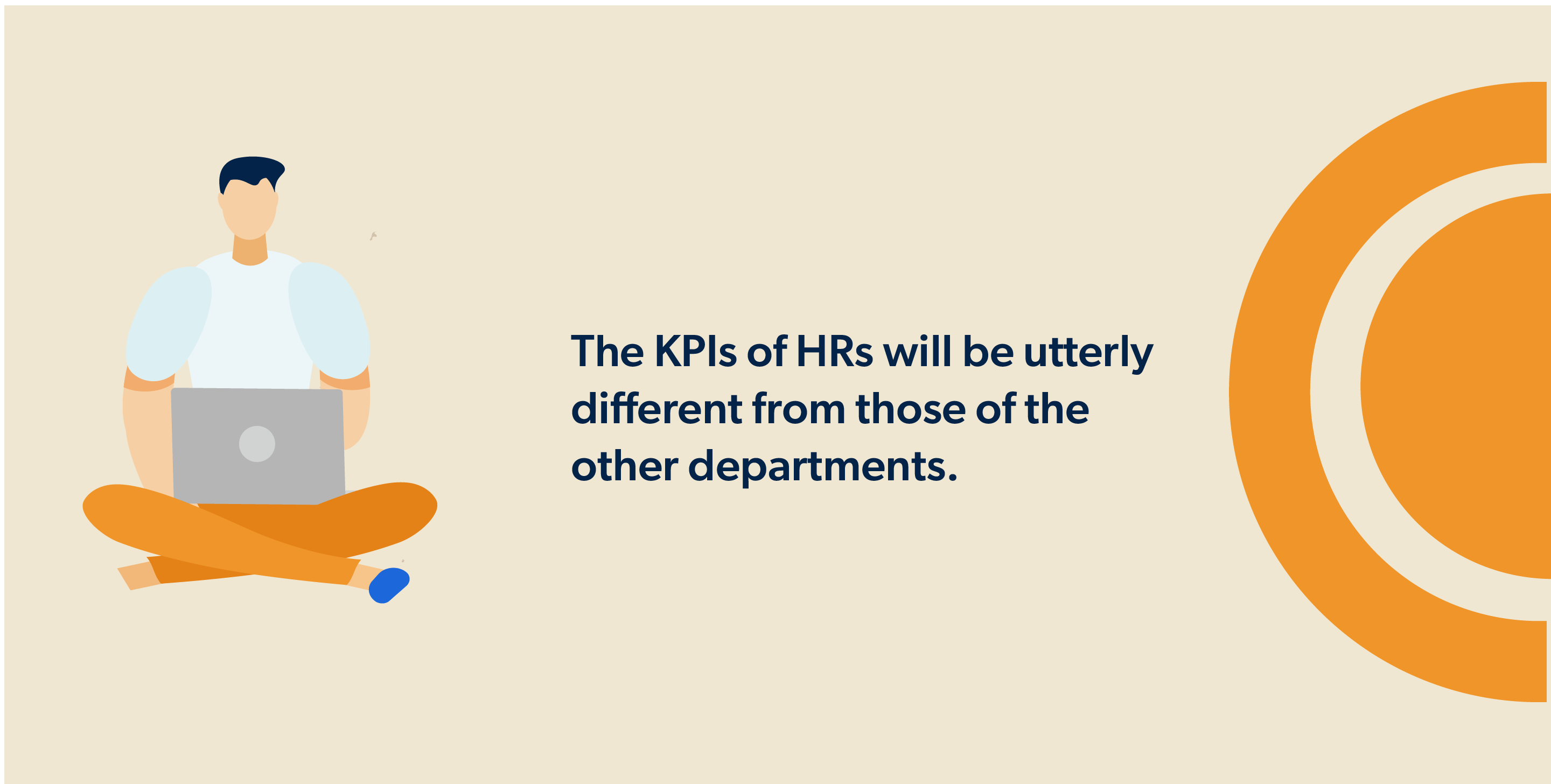
How do I track my KPIs progress?
Here are five practical ways to track your KPIs’ progress:
- Set specific and measurable targets for each KPI.
- Regularly collect and analyze relevant data to assess your KPI performance.
- Utilize dashboards or visualizations to monitor HR KPI trends and progress over time.
- Implement regular check-ins or reviews to discuss KPI results, and identify areas for improvement.
- Use these data-driven insights to make adjustments, refine strategies, and take proactive actions to improve KPI performance.
How do I create a KPI dashboard?
When it comes to tracking HR KPIs, dashboards (like the one created below in SurveySparrow) are your secret weapons. Here’s why they matter:
- Easy Understanding: Dashboards and visuals present HR KPI data in a visually appealing way, saving you from drowning in spreadsheets. You can instantly spot trends, patterns, and areas needing attention.
- Stay Updated: With real-time monitoring on dashboards, you can track HR KPIs dynamically. Keep an eye on targets, spot issues, and take timely actions.
- Make Smarter Choices: Visualizing HR KPI metrics helps you make data-driven decisions. Explore the impact of strategies, initiatives, and policies, identify correlations, and optimize HR practices.
- Engage Stakeholders: Dashboards and visuals communicate HR KPI data effectively in a meeting. Engage stakeholders in discussions, align goals, and drive changes based on data-driven insights.
In a nutshell, dashboards and visuals simplify tracking HR KPIs, enable real-time monitoring, support data-driven decisions, and empower effective communication with stakeholders.
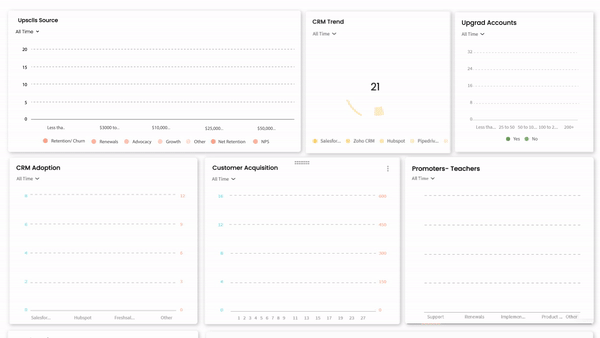
Create employee and HR surveys in seconds, track your HR KPI metrics with a custom HR KPI dashboard and take the right actions.
Sign up below to try our enterprise survey software for FREE.
14-day free trial • Cancel Anytime • No Credit Card Required • No Strings Attached
How To Select The HR KPIs
How do you select which KPIs to focus on?
Selecting KPIs for HR is all about aligning with business objectives, and involving everyone who matters. Here’s how you can do it:
- Keep Business Goals in Mind: When picking HR KPIs, think about what directly contributes to the success and growth of your business. Each KPI should have a clear connection to achieving those goals.
- Get The Right People Involved: Gather your senior executives, managers, and HR team. They all have valuable insights that can help choose the right HR KPIs. Remember, KPIs of HRs may be different from other departments’ KPIs.
- Work in Harmony: While each department may have its own KPIs, make sure they all work together towards the same goal: growing the business. It’s all about teamwork and collaboration.
- Put Employees First: Don’t forget that HR plays a big role in taking care of employees. Choose KPIs that measure things like employee performance, satisfaction, and development. It’s about balancing business success with keeping your employees happy and motivated.
Finally, each of the KPIs that you choose should be based on the universal theory for setting goals:
SMART:
- S – The KPI should be measurable so that you can refer back to it and use it as a benchmark.
- M – It should be measurable.
- A – The KPI should be achievable.
| For example, while aspiring to reduce the turnover rate is a goal worth having, it is impossible to expect that the turnover rate can be maintained at zero. |
- R – The goal should be relevant.
| Just because there are a lot of measurable metrics, it doesn’t mean that you have to keep track of metrics that don’t mean anything to your business objectives. |
- T – The KPIs should be timely.
| The best part about measuring KPIs is that you can track your progress over weeks, months, quarterly, half-yearly, and annually. |
By doing this regularly, you will be on top of your business growth.
Best Practices for Selection:
- The goals that you have for your KPIs should resonate with your company’s growth plans. If they aren’t in alignment with it, then the entire exercise is futile.
- When you see the results of your KPI and compare it with the previous scores, you should be in a position to predict the growth.
- If you think there is no progress, then you should either re-draw your goals or find out what is wrong with your incumbent processes.
- Also, don’t concentrate on numbers that might be an aberration and not the norm.
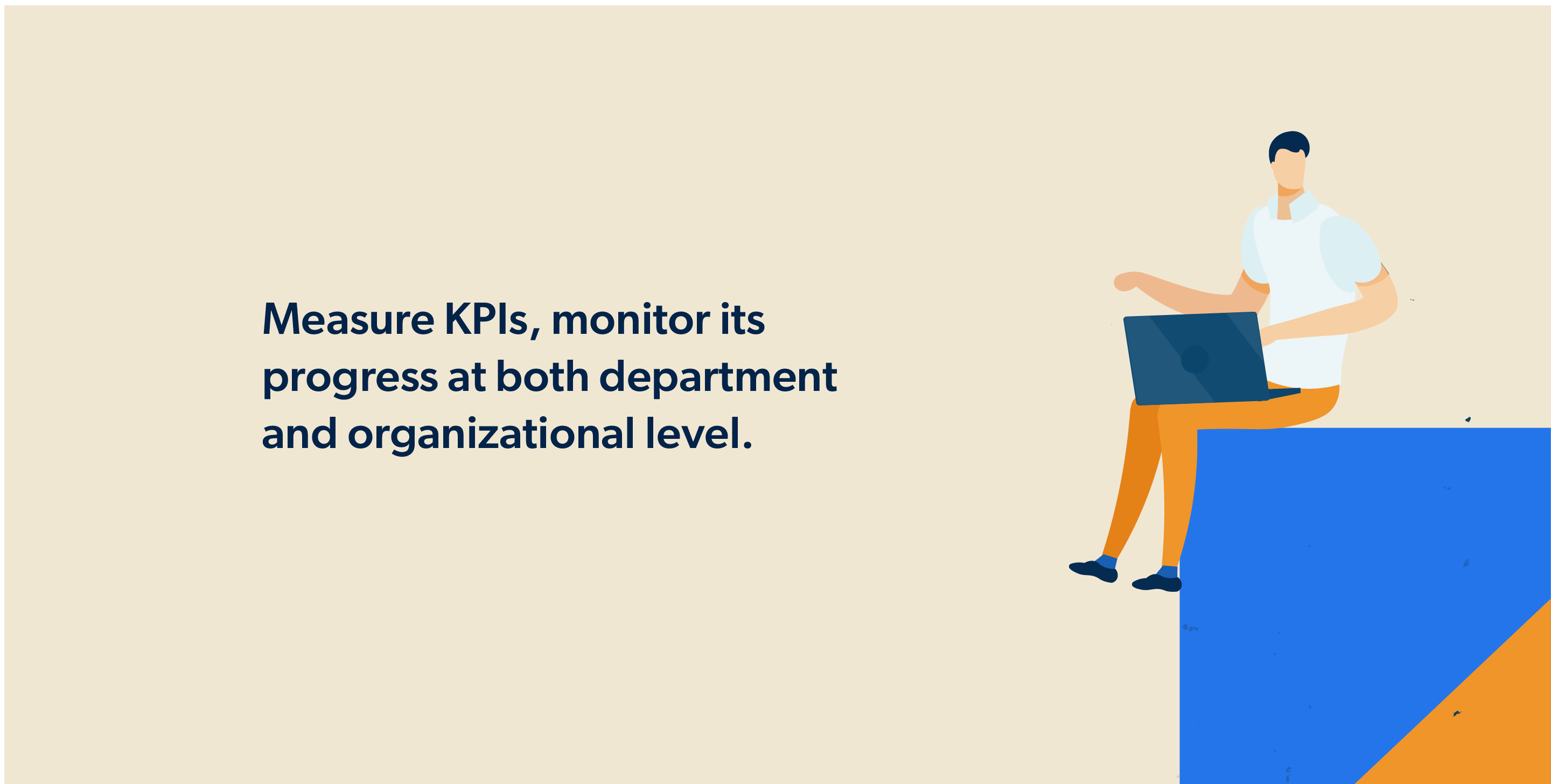
Top 10 HR KPIs To Track In 2023
We know there are tons of KPIs for HR managers out there. But we’ve got you covered with our top 10 picks that work well for most organizations. These HR KPIs will not only help you measure the HR department’s success but also contribute to the overall success of your organization.
- Training Costs
- Employee Productivity
- Hiring Costs
- The Turnover Rate of High Performers
- Job Referral Percentage
- Absenteeism
- Time to Fill a New Employee
- Recruiting Conversion Rate
- Overtime Hours
- Net Promoter Score
Check them out below!
1. Training Costs
This is a helpful HR metric because it helps you track the costs that you have spent on the employees for their development. If you find that there is specific training that has given the best yield, then you can use it for most employees. But if you find that there are courses that didn’t help at all, then you can take that out of your curriculum.
Every new employee should be allowed to upgrade themselves. If you find some of them not performing well for particular training, the onus is on you to find out if the employee wasn’t ready or if it was too soon to dump a training on them.
Thankfully, more often than not, the return on training is usually higher than the investment that was made initially. Employees grow in confidence after they are upskilled, it will even show in the results that these employees produce when they start working.
To find out if the training was successful or not, you can have a test session where you could evaluate the performance of the candidate based on the training.
This will allow you to decide if there was any improvement for the candidate.
2. Employee Productivity
This is an essential human resource KPI. While you can have a rough estimate of the productivity by dividing the total sales during a particular period by the number of employees, we will suggest you dig a bit deeper. There are more variables that you can involve when measuring employee productivity as a KPI.
Factors like the amount of time your employees are working, the number of days that they are working, their qualifications, resources that are spent on them, etc., can be used to evaluate their productivity. For example, you can implement time tracking to see how much time your employees spend on tasks.
Here’s a simple employee engagement survey that can be used to gauge employee productivity at your office:
You too can create such simple, yet effective surveys. Sign up here.
14-day free trial • Cancel Anytime • No Credit Card Required • No Strings Attached
When you continuously measure productivity, they will be able to know how well they have been performing, and there will also be a benchmark against which their work will be compared. It will also help them understand how much work they have done so far, how that work fares, and how they can be better professionals by improving their work.
Constantly measuring employee productivity will also result in higher profits as well as increased motivation for employees, and they would feel as if the company cares about their progress.
3. Hiring Costs
Hiring is one of the most important activities that is performed by the management team as well as the HRs. If the hiring process is flawed, not only is there an issue with the kind of output you will get from poorly performing employees, you will also see that it will directly impact the motivation of your existing employees. Keeping Cost Per Hire as a metric will help you understand what it takes to get the perfect fit.
Additionally, this HR KPI measures the number of resources that you need to invest in each new employee. It includes every cost- marketing, referral incentives, the time cost of recruiter, selecting CVs, subscription to recruitment apps, conducting interviews, etc.
The costs associated with hiring have a lot of impact on your bottom line. That’s precisely why you should not consider recruitment as a simple process that doesn’t affect much. It has a direct effect on everything that your company does.
Your business cannot function without the help of employees who have to be efficient at what they do.
As a business person, your job is to invest in employees who will give you more revenue than what you are paying them for.
When measuring this metric, find out which is the recruitment source for each of them. Which is the most cost-effective source? Use all of this information to optimize your hiring process so that it doesn’t take up a lot of resources while giving you the most output.
4. The Turnover Rate of High Performers
There will be different kinds of employees whose performance varies, and there will be a lot of factors that will be responsible for this.
An employee ‘A’ who is good at your company might not be a good fit for a different company. It could be because he/she is happy with the culture at your place while they might be wary of a different atmosphere where they have little freedom. This will cause them not to give their best.
You will always find that high-performers thrive because of the office culture. They are extremely sensitive to the work atmosphere. Why? Because they are continually hunted by other companies, who want their talent.
Good employees always have a lot of options in front of them, and if you need them to stay, then you need to ensure that you give them reasons to stay.
A relaxed working environment is a good one, for starters. Ask your employees about the reasons why they would stay with your company. What are the things they like about your company? Is it better than all the other organizations they have previously worked with?
Answers to all these questions will help you understand how you can reduce the turnover of high-performing employees. You will be able to offer them incentives and facilities that will appeal to them and make them stay.
If your top performers are leaving, then have an exit interview with them where you understand what went wrong and how you can ensure that you don’t make such mistakes in the future.
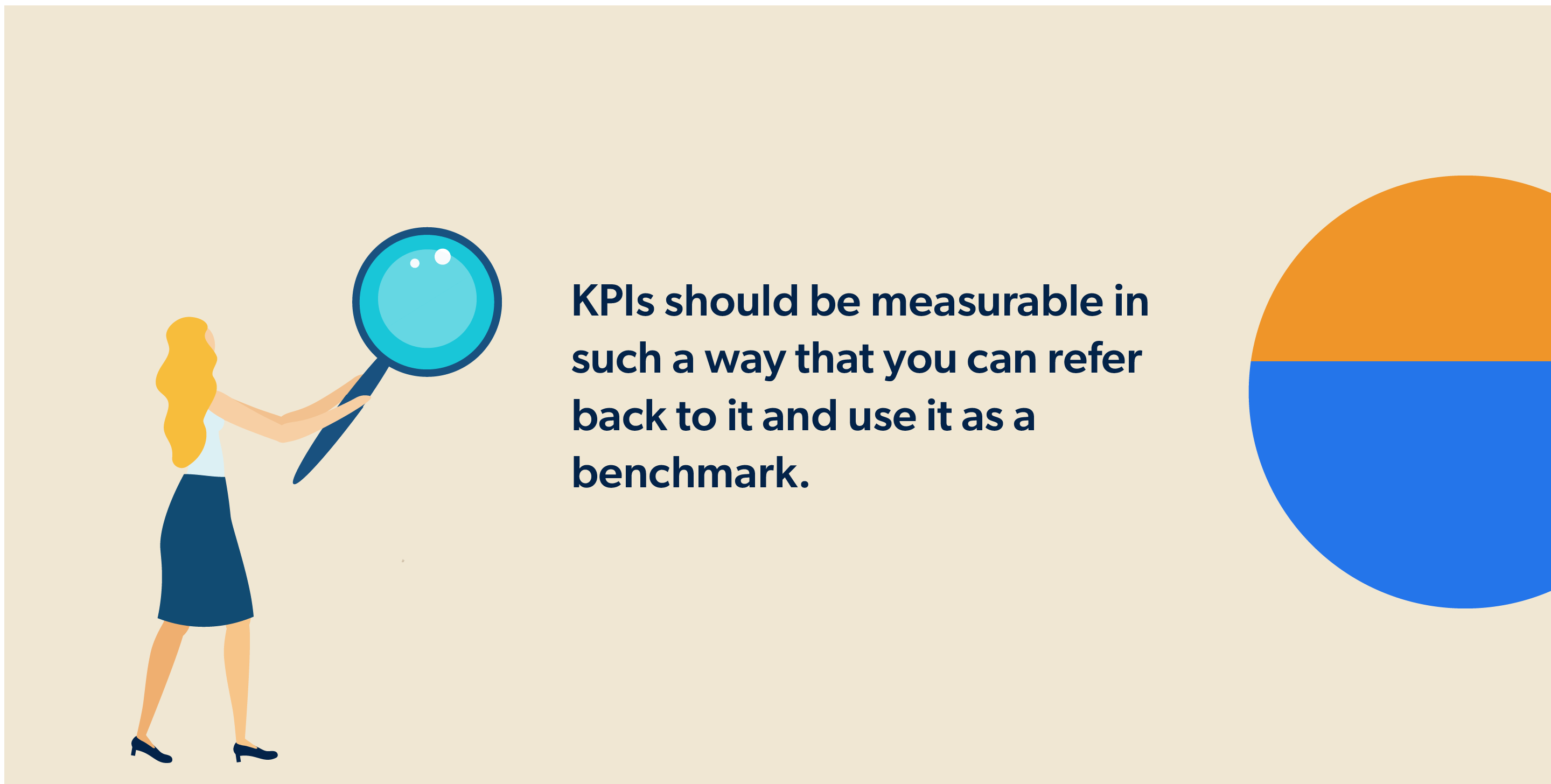
5. Job Referral Percentage
Referrals are one of the most popular ways to hire new employees because there is a factor of trust. Also, if the referral rates are high, it means that your present employees are happy with the way things are.
Why? Because people will refer their friends only when they already have a decent experience at the current firm. Otherwise, they wouldn’t be a part of any referral program, even if it looks lucrative to them.
Job referrals are also a great way to hire suitable candidates who are more likely to stay with the company. By not following the traditional method of hiring, you will be able to reduce your expenses as the usual method takes up a lot of time, effort, and money. This makes the Job Referral Percentage an important metric on our top 10 HR KPIs.
6. Absenteeism
If your employees often take leaves on a whim, it means that there is something inherently wrong with the way your company is functioning. While there may be genuine reasons why employees might not be able to come to the office, you also need to monitor to see if there is a massive trend of absenteeism.
If employees take leaves en masse, even that reflects poorly on the company. There is only one answer for all of this- your employees are not happy at the workplace.
| Absenteeism = (total number of workdays lost)/(number of workdays available) |
You shouldn’t make your employees think as if they are doing a disservice by taking leaves because they are well within their rights to do so.
You should be a little more careful about Absenteeism only when you observe that it is a trend among most employees. For those who have genuine reasons, never slight them. When your organization grows, it will become difficult to track it, which is precisely why having absenteeism as a HR KPI will keep you on your toes.
7. Time to Fill a New Employee
Let’s say that the role of the Digital Marketing Head is lying vacant for a long time. Do you understand the implications of it? Who will be monitoring social media posts? What will happen to the paid ads and who will take care of themit? Who will control the various software that you have subscribed to? Will the marketing side be handled effectively by the marketing team without a head?
What does ‘Time to Fill’ as a HR KPI measure? It measures the time taken to fill a new role after the job offer has been posted, tracks the efficiency of the hiring process, and how optimally are the hiring resources used.
This KPI also helps assess if you are well planned if there are hiring contingencies like a layoff or if someone has quit without warning. All of these are situations that will happen without a doubt.
Businesses should invest time and effort into reducing the time that is taken to fill a job role.
We would suggest not to concentrate on reducing the number alone because that is not the objective of the process. The aim is to find a technically strong candidate with leadership skills.
8. Recruiting Conversion Rate
This HR KPI measures the number of applications that eventually become employees once the process ends. There are a lot of factors that depend on this number.
This KPI applies only to big companies when they are not sure about the number of candidates that they want to select from a pool of candidates. When it comes to small and mid-sized companies, they usually have a specific number in mind and do not necessarily hire with the future in mind. You can use this KPI to include all the steps that you choose while hiring and their efficacy.
The main objective of this KPI is to find out which source gives the best candidates. It is an HR performance metric more than anything else. In this, compare the different methods that you use along with the cost per hire for each of them. Using this data, find out which is the best method that will suit your business and its budget.
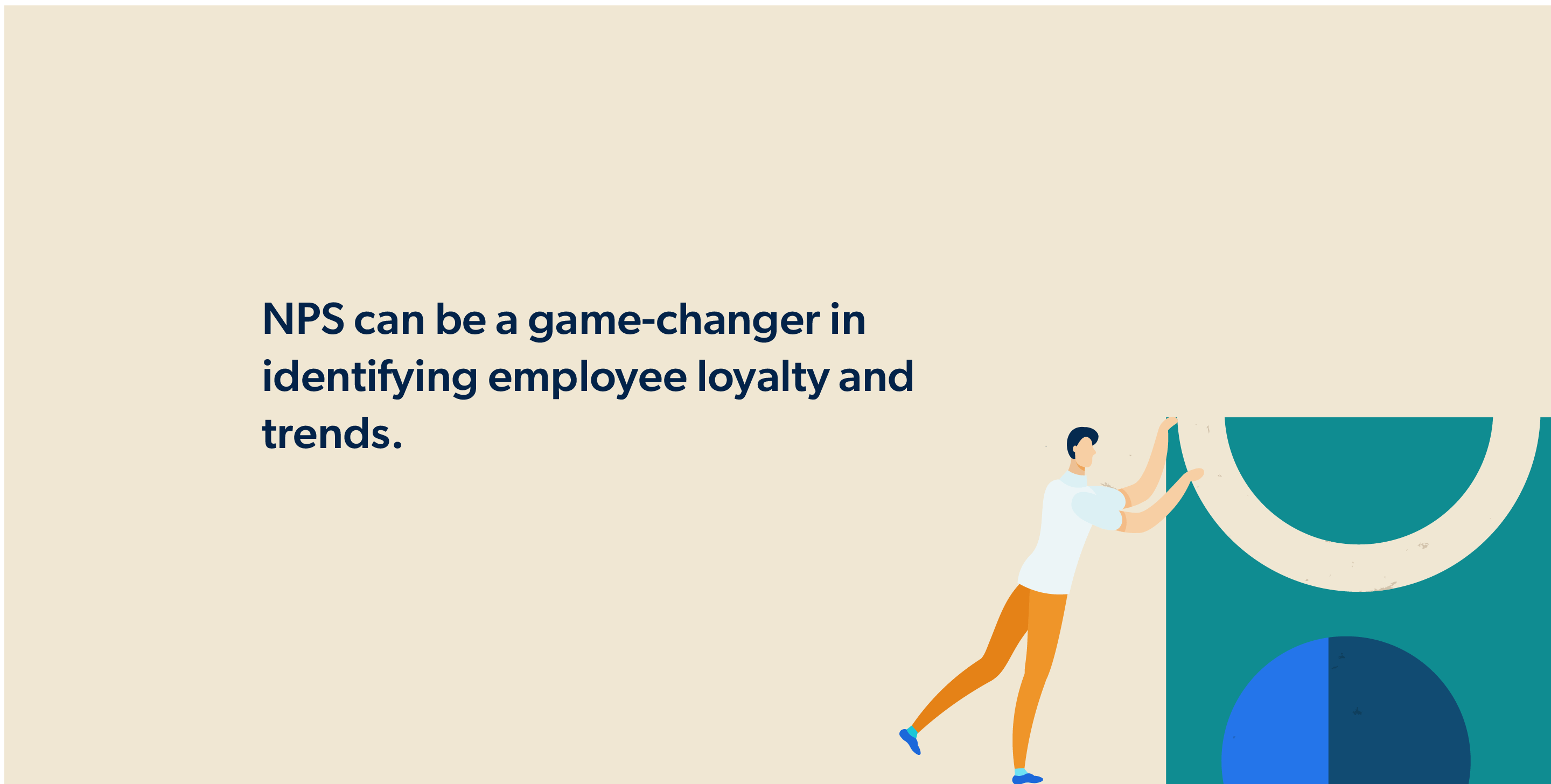
9. Overtime Hours
Overtime is a fantastic indicator as it tells a lot about the willingness of the employees to stretch their timings for the business. But it could also mean something tragic where employees might be working overtime just to get the extra pay. HR’s work lies in finding out the difference between these two.
If you see a lot of overtime hours when the quantum of work has increased for the entire company, then there is nothing to worry about. But if there is no specific reason for the increase in overtime, then you need to be wary of it and make appropriate changes so that overtime happens only when the company requests it.
Businesses should also be careful that they don’t stretch out their employees.
If employees feel as if they are overworked, even extra pay would not act as a source of motivation for them.
They will lose their motivation to come to work every day, and you will not see their best work reflected there too. It will also increase absenteeism. If there is overtime almost every day, then there is something inherently wrong with your process or with the way your employees work.
10. Net Promoter Score
It is one of the most popular human resources KPIs that will tell you about loyalty. It asks a simple question using which you can find out how satisfied your employees are with the services of HR.
NPS is generally used to find out the loyalty of customers and to see if they would be interested in referring your services/product to anyone else. However, you can measure the NPS of HR. It can also be used to find out how willingly they would be recommending the company to a friend of theirs for a job in the company or a client who is looking to hire similar services.
Depending on the goals that you have, NPS can be a game-changer. It will help you unearth trends that might have been ignored earlier because the word of the employees was not taken into consideration.

Wrapping Up
If you choose the right HR KPIs, you will be showing a mirror to the organization. Once you keep measuring these KPIs, you will need to monitor its progress both at the department and organization level. Ensure that you share it with all the stakeholders and keep course-correcting if the need arises.
Create an HR KPI dashboard where all of this information can be accessed easily by anyone in the organization. By sending it to the entire organization, you can make others understand the strategic importance of the department, and it will help show how they are performing against others.
Do remember that even if you are not performing well, it is all right. The aim is not to show them in poor light, but use the metrics to keep improving. Only when you welcome both positive and negative outcomes will you grow as a business.

Mathew Maniyamkott
Regular contributor to various magazines. Passionate about entrepreneurship, startups, marketing, and productivity.
Guest Blogger at SurveySparrow
You Might Also Like

Alternative
Best Meltwater Alternatives: Top Media Monitoring Tools for 2024

Survey Tips
What are Quantitative Research Questions? Meaning, Types, Examples

Customer Experience
Top 10 Inevitable Trends Shaping Customer Experience in Banking

Customer Experience
Strategies And Critical Aspects Of Coaching Feedback

Turn every feedback into a growth opportunity
14-day free trial • Cancel Anytime • No Credit Card Required • Need a Demo?
